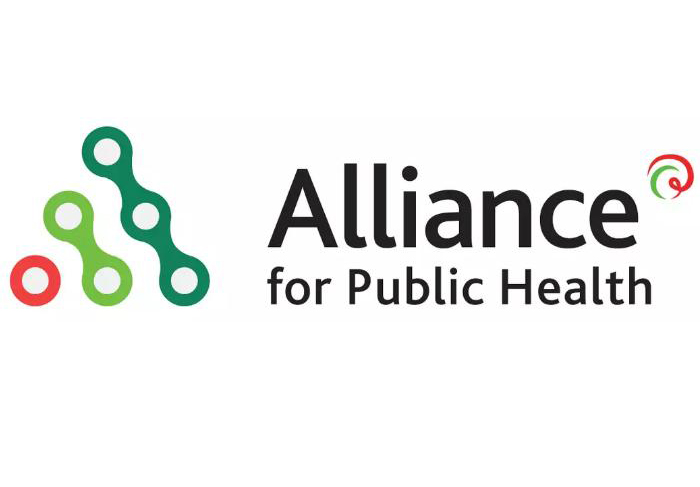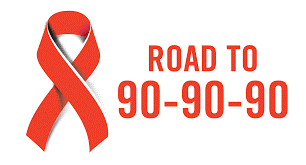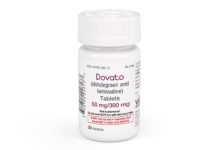As the government prepares to take on more financial responsibility, the country still faces challenges because of ongoing conflict
Ukraine has submitted a TB/HIV funding request worth $119.5 million that the country expects will help broaden services, especially among key populations. The proposal includes a further $39.2 million prioritized above-allocation request (PAAR).
The proposal focuses on increasing access to testing and treatment for multi-drug-resistant TB (MDR-TB) and extensively drug-resistant TB (XDR-TB) and improving access to HIV and TB services for the country’s key populations. The PAAR focuses primarily on expanding those services to areas in the eastern part of Ukraine that are currently experiencing conflict.The $119.5 million within-allocation request equals the country’s full Global Fund allocation for 2017-2019. The Ukraine National TB and HIV Council, which is the country coordinating mechanism (CCM), submitted the full review funding request during the second submission window for the 2017-2019 funding cycle. Ukraine proposed an implementation period of 1 January 2018 to 31 December 2020 for grants emanating from its request.
Aidspan has learned that the Global Fund insisted that the CCM make certain additions to its composition before it would accept Ukraine’s funding request. Specifically, the Global Fund required Ukraine to include members of key affected populations, including people who inject drugs (PWID), sex workers and men who have sex with men (MSM) on the CCM. These additions are in line with the Global Fund’s minimum requirements for CCMs.
 The funding request reflects a country that is in a transition, but also one that – with the ongoing conflict and Russia’s annexation of Crimea in 2014 – the Global Fund has characterized as a challenging operating environment.
The funding request reflects a country that is in a transition, but also one that – with the ongoing conflict and Russia’s annexation of Crimea in 2014 – the Global Fund has characterized as a challenging operating environment.
“It’s a contradictory situation,” said Andriy Klepikov, the executive director of the Alliance for Public Health, which is one of the three principal recipients (PRs) listed in the request. “Ukraine is categorized as not just a middle-income level country, but also a country facing a challenging environment.” He said the request attempts to reflect both of those realities.
The Ukrainian government, which came to power last year, has expressed a commitment to centralizing responsibility for the HIV and TB responses under the Public Health Centre of Ukraine – another PR – and increasing its overall investments in health. Ukraine increased state funding for its HIV and TB programs more than two-fold in 2016 and has proposed a strategy for taking over 80% of basic services by 2020.
This is part of a broader, time-bound transition plan that includes the restructuring of the health system alongside transfers of specific programs from donor to domestic funding. The provision of opioid-substitution therapy (OST) for PWID is among the programs to be transferred.
Nataliya Nizova, the director general of the Public Health Centre, said these commitments are reflected in the proposal.
“We formulated a very strong message about the readiness of the government to take a very serious responsibility to provide the same quality services, same quality treatment and achieve the same goals,” she said. “It’s very ambitious.”
The request acknowledges, though, that the current “scope of required actions necessitate further external financial support until government completes the process of taking over programmatic and funding needs of the national TB and HIV control programs.”
Specifically, in its first objective the funding request addresses concerns about the adequacy of the country’s ongoing TB response – especially the threats posed by MDR-TB and XDR-TB. Ukraine is on the World Health Organization’s list of 30 countries with a high burden of MDR-TB; it has an estimated incidence rate of 49 cases per 100,000 people. Treatment success – at 44.3% for MDR-TB patients and 21.3% for XDR-TB – is the lowest among the high-burden MDR-TB countries.
The request proposes to continue the efforts advanced in the country’s current grants, including integrating TB care at a primary health care level and improving the quality of TB and MDR-TB detection, diagnosis and treatment. This would happen, in part, through the use of better technologies like rapid testing for TB and drug resistance. The request includes funding for medicines for nearly 2,500 MDR-TB and XDR-TB patients.
The request also builds on earlier efforts to move Ukraine beyond its vertical, hospital-oriented TB program, expanding endeavors to integrate civil society into the work of identifying TB cases, to introduce new patients to treatment and to help maintain them on drug regimens. The request proposes to create a grant program for NGOs to improve TB detection among groups that are particularly vulnerable to TB, especially people in prisons. The request also contains specific civil society activities geared toward the conflict areas and people affected by the fighting.
The second objective of the funding request is to improve HIV prevention, diagnosis and treatment. The proposed program includes extensive outreach to key populations, which continue to be disproportionately affected by the disease. In Ukraine, those populations include PWID, sex workers and their clients, MSM, prisoners and people who are transgender (TG). Although Ukraine’s previous Global Fund allocation was used to pursue universal access to prevention, treatment, care and support services among these key populations, the funding request acknowledges a need to expand these services – including in the disputed territories – if the country is going to reach the 90-90-90 targets set by UNAIDS.
 Currently, only an estimated 36% of people living with HIV are currently on antiretroviral therapy (ART). Only 17% of the estimated number of people living with the disease are virally suppressed. Ukraine’s proposal would scale up testing and treatment, with the Global Fund tipped to support more than 25,000 people on treatment by next year and more than 44,000 by 2020. At the same time, domestic financing is expected to cover an additional 78,000 people on treatment by 2018, and up to 135,000 by 2020. The funding request also proposes to scale up prevention services, including behavioral interventions, condom and lubricant distribution and HIV testing.
Currently, only an estimated 36% of people living with HIV are currently on antiretroviral therapy (ART). Only 17% of the estimated number of people living with the disease are virally suppressed. Ukraine’s proposal would scale up testing and treatment, with the Global Fund tipped to support more than 25,000 people on treatment by next year and more than 44,000 by 2020. At the same time, domestic financing is expected to cover an additional 78,000 people on treatment by 2018, and up to 135,000 by 2020. The funding request also proposes to scale up prevention services, including behavioral interventions, condom and lubricant distribution and HIV testing.
The funding request’s third objective is to build a resilient and sustainable health system, with an ultimate aim of achieving universal health coverage. This objective overlaps with the previous two specifically with respect to proposed efforts to remove some of the barriers that prevent TB and HIV patients from accessing treatment – including long distances to facilities, the high cost of care, and stigma. The planned activities include ensuring delivery of free HIV and TB care to “people in most acute need,” removing any legal obstacles to the delivery of services, and restructuring and consolidating facilities to avoid duplication of services.
Although the proposal describes plans for the government to shoulder more financial responsibility for its HIV and TB programs, it acknowledges that sustainability remains a critical risk – especially for HIV detection, outreach and prevention programs. The government is developing a transition evaluation system to monitor the sustainability of the programs over which it is assuming primary funding responsibility. “It will ensure step-wise progression, address delays and challenges with the relevant stakeholders and introduce appropriate adjustments,” the proposal states.
With the government set to take on so many new responsibilities, Klepikov said it will also be important to monitor the programs, like OST, that the government runs for continued quality. “I think it is a very good policy achievement that government agreed to take over so many programs,” Klepikov said. “They are fully equipped and capable to do this. But it’s still in process.”
The ongoing conflict in the eastern part of the country has made HIV and TB programming difficult – and expensive – and threatens to undermine gains made in other parts of the country. While basic activities in the conflict areas are included in the within-allocation portion of the proposal, initiatives to improve and expand HIV and TB services in those areas are contained in the PAAR.
In fact, the PAAR is devoted almost entirely to these initiatives. The PAAR prioritizes TB detection and diagnosis, especially MDR-TB, and proposes to fund treatment for at least 300 MDR-TB patients in the conflict areas. It would also scale up HIV prevention and treatment programs for PWID, sex workers and their clients, MSM and TG in those regions.
Editor’s note: This article was modified shortly after it was posted to correct an error concerning people living with HIV in Ukraine whose viral load is suppressed. We had said that 17% of the people on ART are virally suppressed. We should have said that 17% of the estimated number of people living with HIV are virally suppressed.


 ПОИСК ПО САЙТУ
ПОИСК ПО САЙТУ  поиск по ресурсному центру
поиск по ресурсному центру 



